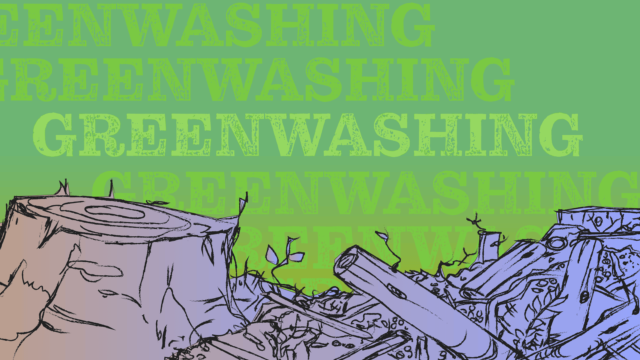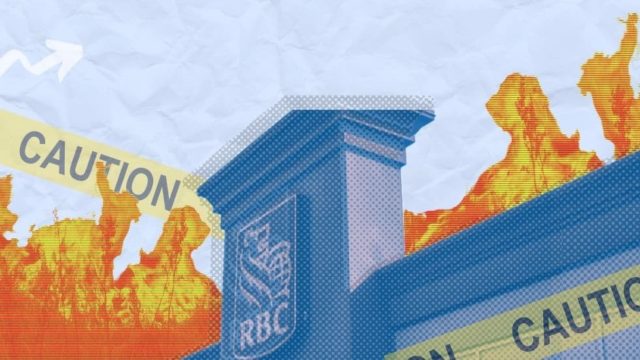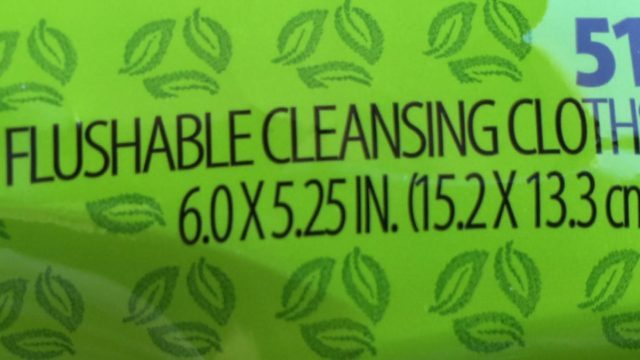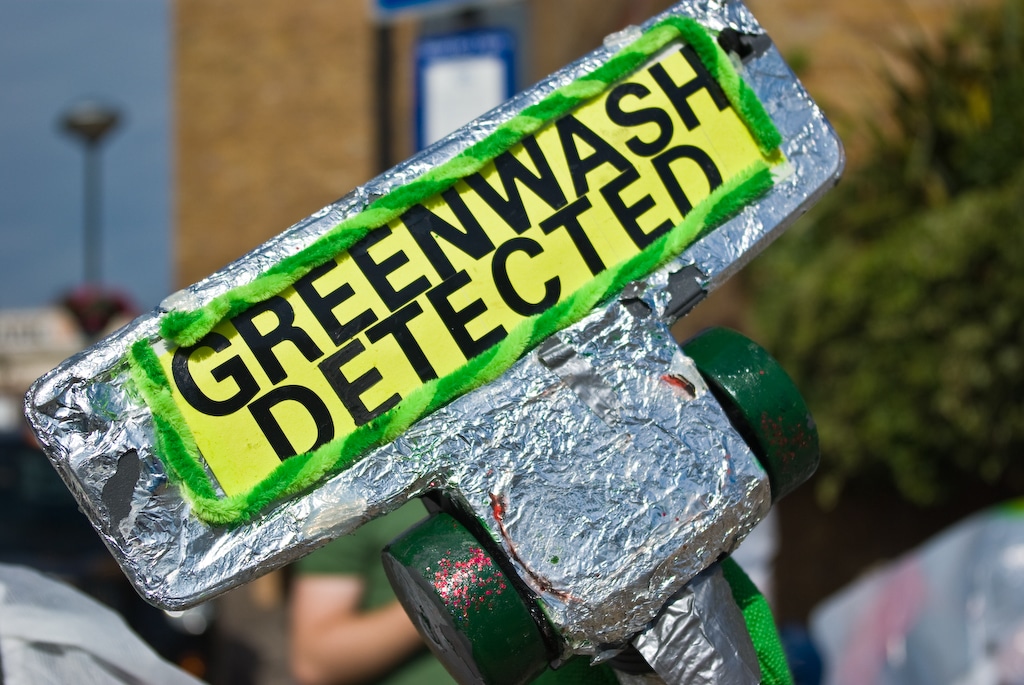
Photo by fotdmike
Greenwashing information hub
Greenwashing is a deceptive marketing practice and it can be hard to spot. Compounding the problem is the fact that environmental advertising is not tightly regulated and can be difficult to enforce.
Ecojustice has created this greenwashing hub to provide key information, help you make ethical choices as a consumer and make sure you can stay informed on how Ecojustice is fighting against it.

Did you know?
42% of greenwashing claims are exaggerated or false. [1]
So what exactly is greenwashing?
Greenwashing is misleading, untrue, or unsupported statements about
a product or company’s environmental or climate benefits.
Greenwashing attempts to persuade the public that an organization’s products, aims and policies are more environmentally-friendly than they actually are. As a result, companies may enjoy better sales or boost their reputations under the premise of sustainability without actually incurring the cost or responsibility of implementing sustainable practices.
Compounding the problem is the fact that environmental advertising is not specifically regulated. This leaves greenwashing to be regulated by competition, consumer protection, and securities regulators and means that misleading greenwashing is rarely prosecuted by regulators who are not specialized in analyzing environmental claims. Buzzwords like ‘ecological’, ‘environmentally-friendly’, ‘natural’, ‘green’, and ‘sustainable’ have no clear definition or widely-recognized required standard to warrant those claims
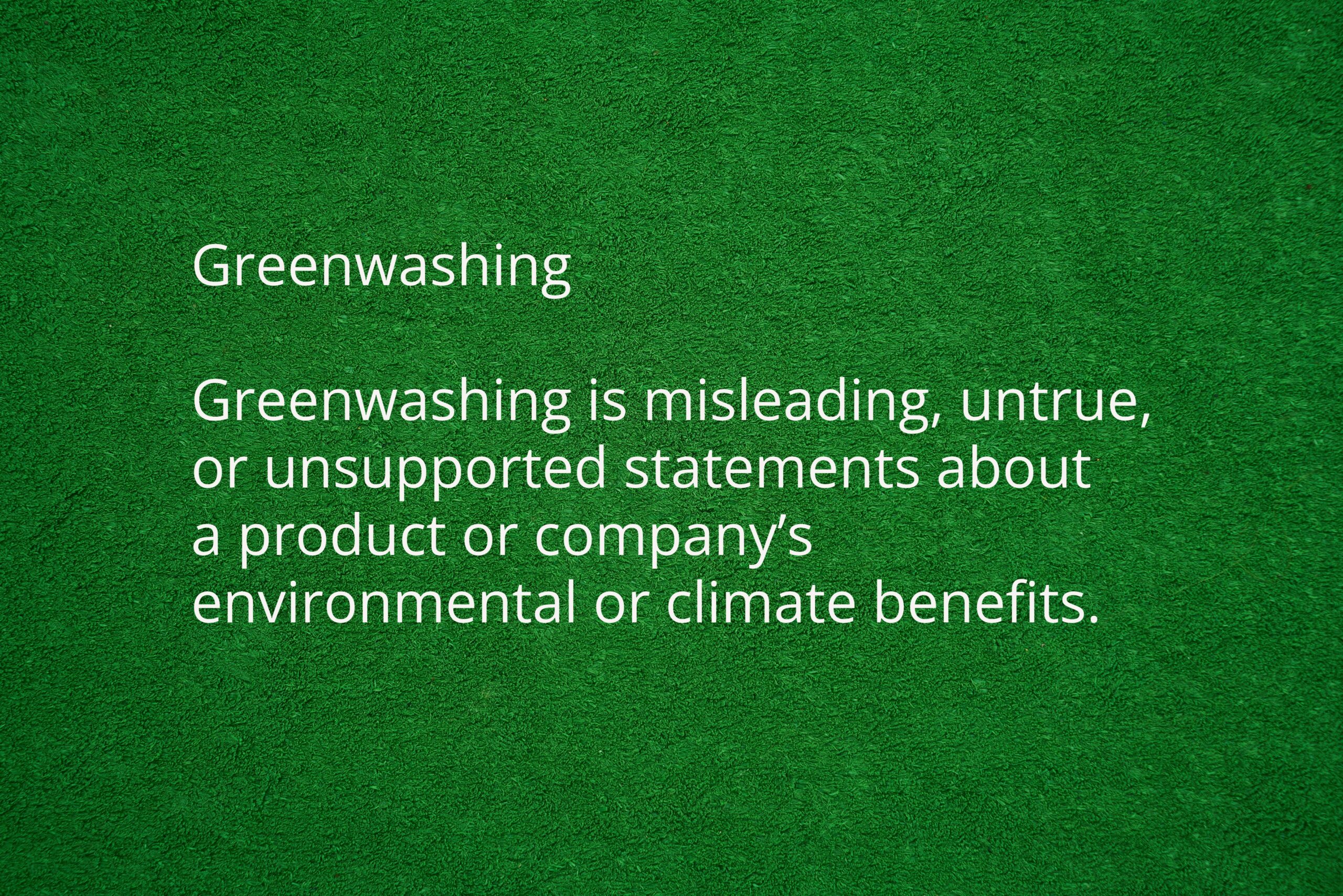
Dig deeper into greenwashing
Greenwashing is everywhere and fighting it can feel like an uphill battle.
In 2008, the Competition Bureau of Canada published guidelines for environmental claims in advertisements, requiring advertisers to avoid vague or misleading language, to include verifiable and specific information, and to provide relevant context in their claims. Those more robust guidelines were archived in November 2021 and replaced with a short webpage that contains limited guidance.
More recently, the Competition Bureau issued a warning to companies that ‘greenwashing’ their products is illegal in Canada. Despite this, greenwashing and its deceptive marketing practices remain widespread in various industries across the country.
We have rounded up our top greenwashing blogs so you can dive deeper into this topic, see examples of greenwashing in action and make informed choices. We recommend starting with our greenwashing 101 blog to get started.

58% of global c-suite leaders admit to greenwashing. [2]
Ways Ecojustice stands up to greenwashing
Ecojustice is tackling greenwashing using the power of the law.
At the federal level, Ecojustice and the Canadian Association of Physicians for the Environment have advocated for amendments to the Competition Act to strengthen prohibitions against greenwashing. Recently, some proposed amendments to the Competition Act clarified that businesses must be able to back up environmental claims with proper tests before making these claims, but further regulation is needed.
Provinces also have consumer protection legislation and securities legislation that are intended to protect consumers, shareholders and the public from being misled by companies’ statements. Depending on the province, these laws can allow people to bring complaints to regulators or even bring cases to court when a company has made false or misleading claims, including about their environmental practices. For example, Investors for Paris Compliance filed a complaint with Ontario and Quebec securities regulators alleging misleading disclosure by Canada’s big five banks regarding their sustainable finance activity in January 2024.
At the bottom of this page we link to key cases we have worked on that involve greenwashing or click here.

Ways you can stand up to greenwashing
- The first thing to do is ask questions and look deeper into a company’s environmental claims. If you see something on a label, visit the company’s website for more information. If the information there seems broad or vague, there’s a good chance there’s some greenwashing at play.
- Don’t be afraid to reach out to companies directly and question their claims. Transparency is important. If a company is not upfront with its practices and products, it might be because there’s no substance to their environmental claims.
- Do your part by researching the products you plan to purchase before going to the store. And if possible, the best way to ensure you are being sustainable is to buy fewer things and avoid single-use products. Invest in well-made, sustainable products that will last you for years to come.
- You can also file a complaint with the Competition Bureau.
- You can also take photos or screenshots of greenwashing and post about them online. This helps spread the word and, if you tag the company involved or organizations with relevant followings, this can garner even more attention.
The rise of greenwashing, paired with ineffective regulation, diminishes the power of environmentally-conscious consumers to make ethical product decisions. But with a little time and effort, consumers have an incredible amount of power to exert pressure on companies to adopt greener manufacturing processes and business operations.
Greenwashing is simply unacceptable and when a company misleads consumers you can count on Ecojustice to hold them to account!
References
[1-2] 20+ Shocking Greenwashing Statistics – Zippia

